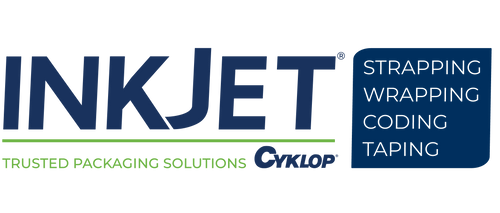Choosing Food-Safe Inks for Egg Cartons & Packaging
Like other sectors in the food production field, those in the egg industry are subject to strict safety guidelines. FDA policies like the Egg Safety Final Rule, for instance, establish storage and transportation standards in order to cut down the risk of foodborne illnesses like E. coli, Norovirus, and Salmonella. Beyond these logistical regulations, another common requirement across the egg industry involves traceable product packaging.
Mandated by supply chain guidelines and state laws, egg cartons must be labeled with specific codes or else the manufacturer is at risk of incurring monetary penalties. Take a look at the Illinois Egg Law as an example. According to this state regulation, retailers are tasked with reviewing each case or carton to ensure that the following codes are present and legible with:
- Egg grade
- Egg size
- The name of the packer
- The address of the packer, distributor, retailer
- The packaging date, expressed in a Julian date format
- The expiration date, expressed in a month/day format
In response to these requirements, retail networks are often vigilant in their egg package inspections. If the packages are mislabeled, the packer can expect fines, recalls, and other similar consequences.
Fortunately, the industrial printing market is filled with hardware and ink formulas specifically designed for egg applications, including water-based formulas for paperboard cartons and food-safe ink for eggs.
The Importance of Substrate-Compatible Ink for Egg Packaging
As mentioned above, egg cartons must be outfitted with a range of codes to comply with regulations set by state governments and local supply chain partners. In addition to basic packaging information and expiration dates, cartons are also often required to display machine-scannable barcodes, serial numbers, and batch codes.
For these codes to work successfully, they must be sharp, well-applied, and legible. This requires the use of substrate-compatible ink formulas.
Egg cartons come in a range of forms and are produced with materials that feature varying levels of porosity. Porous and non-porous surfaces react to inks differently, so to ensure easily readable markings, users must use substrate-compatible ink formulas. If an incompatible formula is used, it can lead to messy, short-lived markings that invalidate code compliance.
Some of the most common egg carton substrates include:
- Paperboard, a very porous material that allows ink to sink beneath the surface.
- Foam, a non-porous material that requires a quick-drying ink formula for successful coding.
- Plastic, another non-porous substrate that requires quick-drying ink.
To meet these different requirements, companies like InkJet, Inc. offer a variety of different water-based and solvent-based inks that are specifically designed for certain porous and non-porous applications. With the guidance of an ink expert, egg packaging groups can find the appropriate formula to create long-lasting and durable product codes.
The Importance of Food-Safe Ink for Egg Printing and Egg-Contact Surfaces
Although carton labeling is the most common printing requirement within the US egg industry, direct printing on eggs is prevalent throughout other markets. Within the European Union, for example, egg producers are required to mark their products directly with codes that indicate:
- The method of production (i.e., whether the eggs were produced organically, in a free-range farm, in a deep litter indoor housing, or through cage farming).
- Which country the egg originated from.
- Which region within the country the packaging facility is located.
To comply with these kinds of coding regulations, egg producers must use ink formulas guaranteed to be food-safe. Similarly, any coded surfaces that come into contact with the eggs must be printed with food-safe ink.
In the US, ink formulas are considered “food-safe'' if they only contain additives that have been declared safe for use in packaging and food contact substances. That said, there is no official “FDA-Approved Ink” designation. Instead, egg packaging groups must directly communicate with ink producers to discover which formulas are compliant with current regulations.
InkJet, Inc. for instance carries a number of formulas like which are guaranteed to be safe for marking food and surfaces that come in contact with food. By using formulas like OS496, egg producers can create code-compliant products without risking any health problems associated with ink migration.
Need Ink for Egg Applications? InkJet, Inc. Has You Covered
With the right ink formula, egg packaging companies can outfit their products with the codes needed to comply with state laws and retailer requirements. Here, at InkJet, Inc. we help those in the egg industry find these formulas.
Whether you’re looking for a water-based formula to print on paperboard cartons or food-safe ink for eggs themselves, our diverse ink portfolio has the offerings needed to complete these applications with accuracy and reliability.
To find food-safe ink for eggs, contact us online today or call 1(800) 280-3245.



